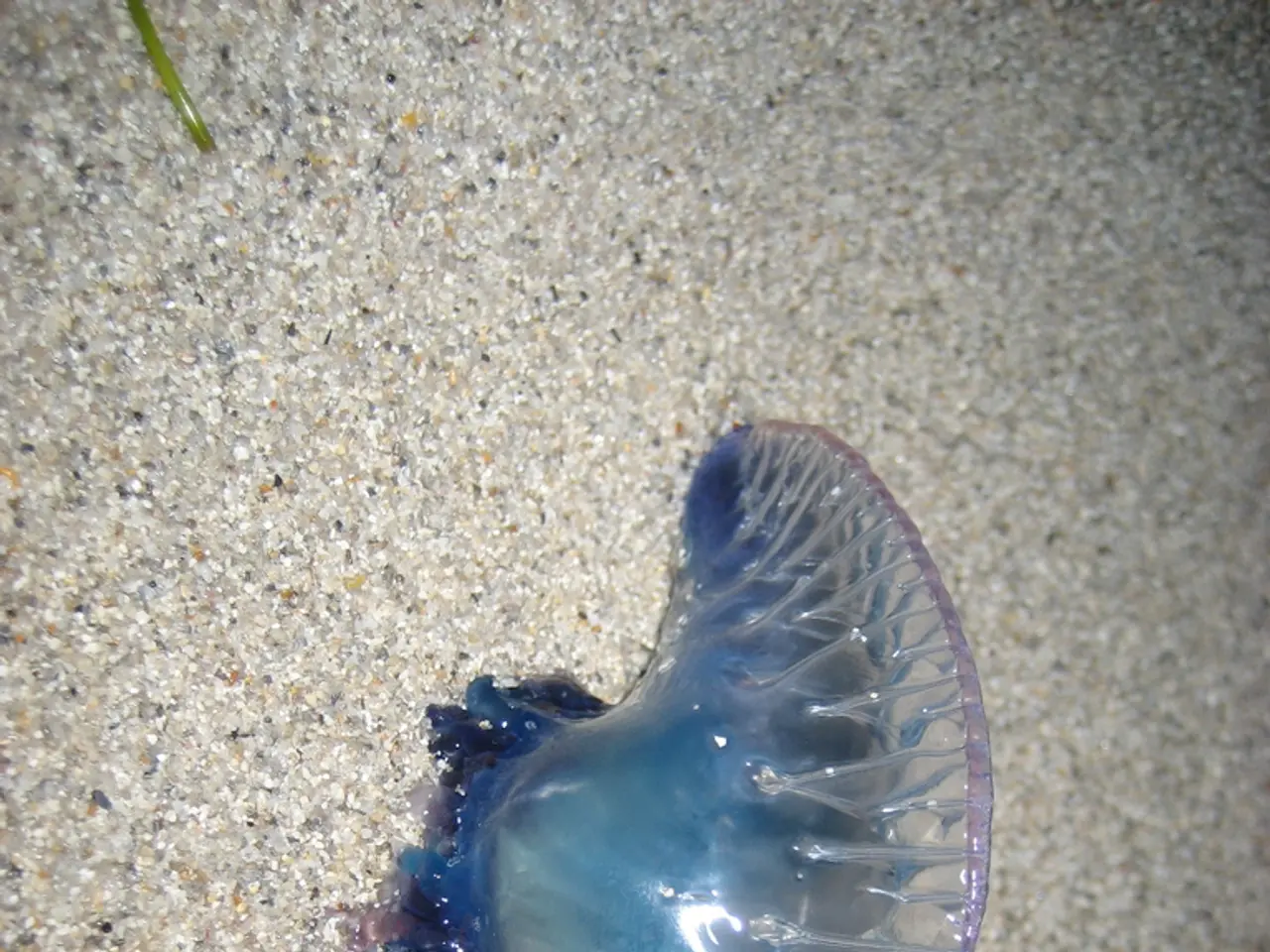Giant New Stick Insect Uncovered Surprisingly in Expected Location Unveiled
Giant Stick Insect Discovered in Australian Rainforest
In a groundbreaking discovery, researchers have uncovered a new species of stick insect, Acrohylla alta, in the high-altitude rainforests of North Queensland, Australia. This insect, which can reach approximately 40 centimeters in length and exceed the weight of the giant burrowing cockroach, is set to challenge existing knowledge about insect size and diversity.
Size and Weight
The newly-discovered stick insect is one of the largest documented species, with an approximate length of 40 centimeters. While exact weight figures are not publicly detailed, scientists believe it exceeds the weight of the giant burrowing cockroach, highlighting its exceptional mass for an insect.
Habitat
The habitat of Acrohylla alta is located in the high-altitude tropical rainforests of the Atherton Tablelands, at around 900 meters above sea level. This unique environment, part of the Wet Tropics rainforest region, is likely contributing to the insect's large size and unique adaptations. The rainforest canopy and high altitude conditions mean the insect is often found more in the upper layers of the forest, contributing to its previous elusiveness to researchers.
Implications for Australian Rainforest Biodiversity
The discovery of Acrohylla alta underscores the rich and still incompletely understood biodiversity of the Wet Tropics, especially at higher altitudes. It highlights how remote and less-explored habitats in Australia continue to harbor large, unique species that challenge existing knowledge of insect size and diversity. This finding indicates that significant invertebrate diversity remains undocumented in Australia's rainforests, suggesting potential for more discoveries that could deepen understanding of ecological niches, species evolution, and conservation prioritization in these ecosystems.
The new species also provides an opportunity to study evolutionary and ecological factors driving gigantism in insects, as its large size appears linked to its specific high-altitude rainforest environment.
Future Research
Wildlife researchers Angus Emmott and Ross Coupland described the new insect in a recent Zootaxa paper. Emmott expressed a desire to find a male individual from the species to learn more about Acrohylla alta. So far, only two female specimens have been observed, one from the researchers' outing and another from a garden.
The discovery of Acrohylla alta serves as a reminder of the ongoing importance of exploring diverse and remote habitats for uncovering biodiversity. As environmental scientist Peter Valentine stated, "New species discoveries raise concerns about the preservation of rainforests." With only two specimens observed so far, the future research on this giant stick insect promises to reveal more about its ecological role and the secrets of its high-altitude habitat.
[1] Emmott, A.J., Coupland, R.G. (2021). A new species of Acrohylla (Phasmatodea, Phasmatidae) from the Wet Tropics, North Queensland, Australia. Zootaxa, 4933(3), 529-542.
[2] Valentine, P. (2021). Interview with Angus Emmott, Researcher at James Cook University. Retrieved from https://www.jcu.edu.au/news/acrohylla-alta-giant-stick-insect-discovered-in-australian-rainforest
[3] James Cook University. (2021). Giant Stick Insect Discovered in Australian Rainforest. Retrieved from https://www.jcu.edu.au/news/acrohylla-alta-giant-stick-insect-discovered-in-australian-rainforest
- The discovery of Acrohylla alta has sparked curiosity in the scientific community, particularly in the field of science, as it offers an opportunity to study evolutionary and ecological factors that contribute to gigantism in insects, which could have implications for our understanding of technology and possibly aid in the design of future robotic organisms.
- The finding of this giant stick insect has also piqued the interest of those in the health-and-wellness sector, as understanding the unique adaptations of Acrohylla alta could lead to insights on resilience and survival strategies in extreme environments that could potentially be applied to human health and wellbeing.
- As discussions around environmental-science and conservation continue to evolve, the study of Acrohylla alta could play a significant role in highlighting the importance of preserving australian rainforests and other less-explored habitats, not only for the continued discovery of new species, but also for maintaining the overall health and balance of global ecosystems.




